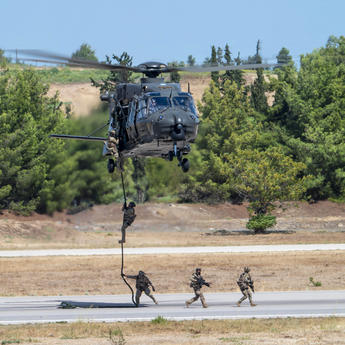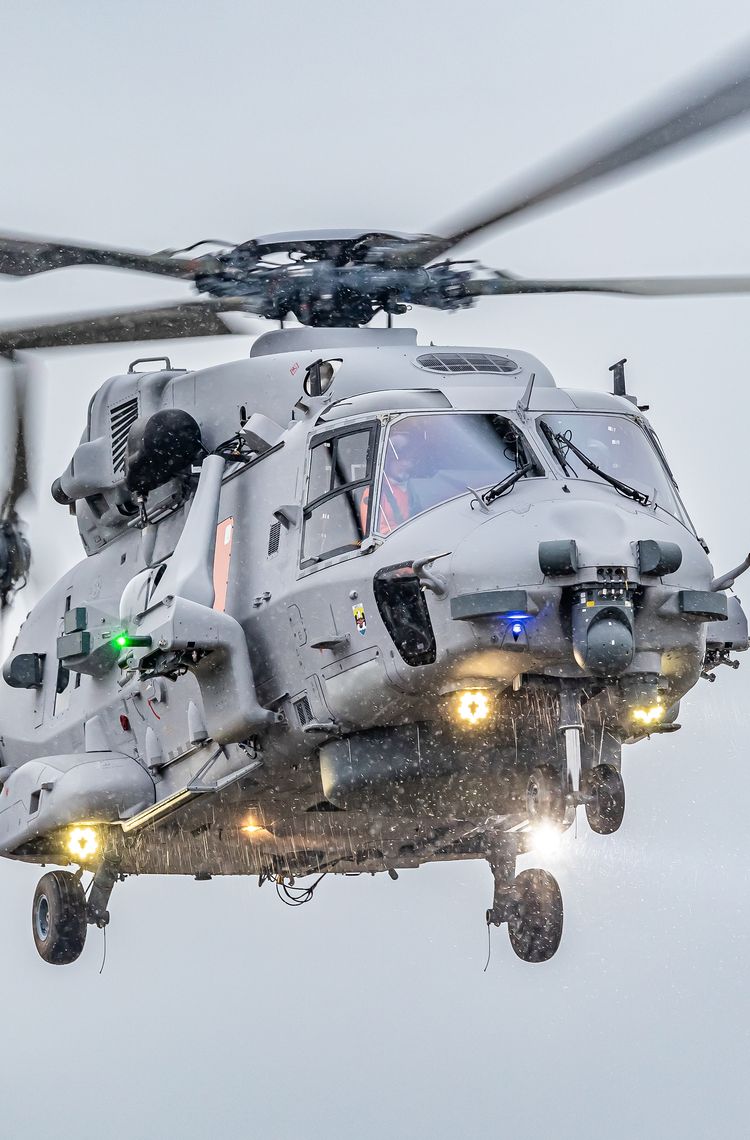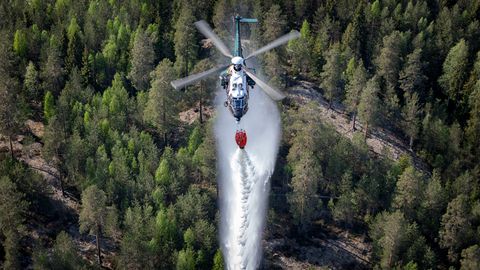Following the entry into service of 18 Sea Lions, the German Navy is now preparing for the entry into service of the Sea Tiger, equipped for the most demanding anti-surface and anti-submarine missions. This project is being managed in close cooperation with Airbus Helicopters.
The contract signed in November 2020 covers 31 helicopters, with deliveries scheduled to start at the end of 2025. The first important step was taken with the first flight of the NH90 Sea Tiger on 30 November 2023 at the Airbus site in Donauwörth, Germany. The aircraft, also called the Multi-Role Frigate Helicopter (MRFH) is the latest version of the NH90 NATO Frigate Helicopter (NH90 NFH). Previous variants are already in service in France, Italy, Norway, Belgium, the Netherlands and Qatar. A number of improved features specific to the German version are however expected.
Ramping up
“The basic helicopter is identical to the Sea Lion already in service,” explains Ingo Bayer, Senior Programme Manager for the NH90 at Airbus Helicopters. “However, we’ve also given it an exceptional mission system, making it the most sophisticated and versatile helicopter in its class.” This excellence comes from the combination of Leonardo’s LEOSS-T electro-optical system, MBDA’s MARTE ER anti-ship missile (with the installation of two in-cabin work consoles) and, for anti-submarine missions, EuroTorp’s MU90 torpedo and Thales’s FLASH SONICS hardened sonar. “All this equipment is fully integrated into the mission system, enabling the helicopter to switch rapidly from one capability to another,” explains Ingo Bayer. “The carrying arms fitted on the helicopter will make it possible to transport additional fuel tanks, missiles or torpedoes. The helicopter can also be used for maritime counter-terrorism missions, carrying commandos.”
Equipped in this way, the German Navy will breathe new life into surveillance and interdiction missions on NATO’s northern flank, particularly in the Baltic Sea. Before this can happen, however, the helicopter will have to be produced and then put into service.
“We’re expecting to deliver six to seven helicopters a year, giving us a fleet of around 15 by the end of 2027,” explains Ingo Bayer. “The transition from the Sea Lynx to the Sea Tiger will be completed by 2027, and the last helicopter will be delivered by 2030.” To meet this timetable, the Donauwörth assembly line will first have to ramp up its capacity, which has been reduced since the last Sea Lions were delivered at the beginning of 2023.
A relationship of trust
As this article goes to press, future crews have already begun their training on the onboard systems. Airbus Helicopters is also focusing all its attention on the forthcoming entry into service, by organising a multi-role capability demonstration. “We are going to demonstrate to the customer the multi-role capability of the helicopter and its ability to switch rapidly from one configuration to another in a restricted space, reproducing the space available on a ship,” reveals Ingo Bayer. This campaign, organised at the customer’s Nordholz Naval Airbase, is a first operational “stress test” for the Sea Tiger. Not only will it show that the helicopter meets the contractual requirements, but it will also give the customer an opportunity to get first-hand experience of the helicopter before delivery. “We have established a very close relationship with the various industrial partners in the Sea Tiger programme, as well as with the German Navy,” concludes Ingo Bayer. “Our ambition has been to establish a relationship of trust with everyone involved, and today we are reaping the rewards of this by being right on schedule and delivering the expected level of performance.”
Latest Helicopters news
Continue Reading

Spanish Ministry of Defence orders 100 Airbus helicopters
Press Release
Helicopters
Spain is placing orders for 100 Airbus helicopters through the Directorate General for Armament and Material (DGAM) of the Ministry of Defence.
German Navy takes over first NH90 Sea Tiger
Press Release
Helicopters

Germany orders 20 additional Airbus H145M helicopters
Press Release
Helicopters

Greece signs NH90 follow on support contract
Press Release
Helicopters

Airbus to onboard Artificial Intelligence in French armed forces' information systems
Press Release
Defence

